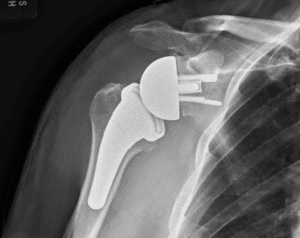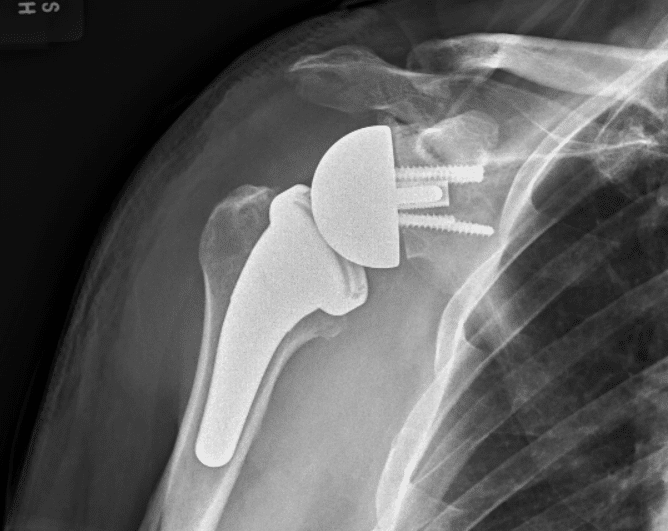What is the Difference Between Standard and Reverse Shoulder Replacement?
 I have heard of shoulder replacement, but what is the difference between reverse and standard shoulder replacement?
I have heard of shoulder replacement, but what is the difference between reverse and standard shoulder replacement?
The easiest way to understand this is to look at the normal arrangement of the human shoulder. It is basically a ball and socket joint, with the upper part of the arm bone as the ball, and the shoulder blade as the socket.
A standard shoulder replacement, also known as an “anatomic” shoulder replacement, simply re-creates this normal arrangement of the human shoulder. The ball at the top of the arm bone is refinished or replaced with a shiny metallic surface, and the socket in the shoulder blade is replaced by a special type of advanced plastic.
A “reverse” replacement simply “reverses” this arrangement. At the top of the arm bone, a special type of advanced plastic cup is placed, usually at the top of a stem that sits inside the arm bone. On the shoulder blade side, a shiny metallic ball is implanted into the shoulder blade, usually held in place by screws.
But why do some patients get reverse replacements and other patients get standard replacements?
There are 2 main reasons to use a reverse replacement.
The first reason is due to rotator cuff problems. Some patients with bad arthritis also have very large and long-term rotator cuff tears, and some may have complete absence of the rotator cuff altogether. The reverse replacement changes the arrangement of the shoulder joint and allows the patient to overcome this lack of rotator cuff and use the “meaty” muscle on the outside of the shoulder to lift and move their arm.
The second reason is due to the severity of the arthritis. Very advanced and long-term arthritis can cause wear and tear of the socket part of the joint that is so bad that doing a standard replacement places the patient at risk of complications such as instability and implant loosening. If this is the case, a reverse replacement may be the best option to avoid the risks of these complications.
If you are struggling with shoulder arthritis pain or rotator cuff problems, a visit with Dr. Johnny T. Nelson will shed some light on your unique situation. Using a combination of your history, physical examination, and review of available imaging, a treatment plan will be created that is right for you.
Call 919-872-5296 today to make your appointment!
What is the Difference Between Standard and Reverse Shoulder Replacement? Read More »



